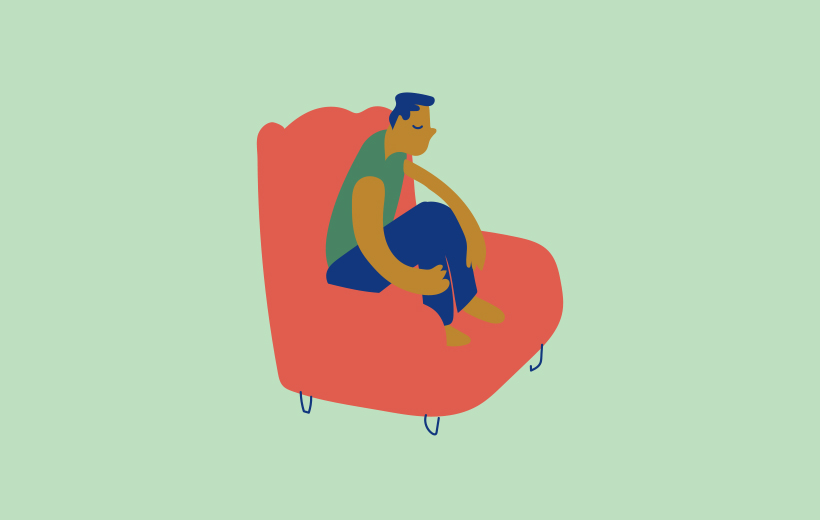Meditation Posure, Position, & Poses
By Tergar Meditation Community • 3 min read
By Tergar Meditation Community • 3 min read
Meditation posture, also known as sitting in meditation position, is a practice designed specifically to stabilize your body and mind. When the body feels grounded and calm, the mind also settles.
“Mind and body are like a cup and water—they enrich and support one another.”

When you meditate and especially when learning to meditate, it’s very important to sit in the right meditation position. There are two meditation postures you can take, a simple position, and a more elaborate position. Whichever you choose, the key is to keep your back straight. The spine has a natural curve, so don’t try to force it. Just keep it easily upright. If you fall into a slouch, your body will fold uncomfortably — it’s too loose. On the other hand, trying to stay as straight as a board will feel tense — it’s too tight. If you have back pain or something similar, it’s fine to use a support, such as a pillow.
This is the easiest meditation position for a beginner.
Point 1: Shoulders and arms
Open your shoulders, relaxing the arms and letting them be natural; you can put your hands on your knees. Keep the spine and neck straight.
Point 2: Relax the body
While continuing to keep your back loosely upright, allow your whole body to relax. That’s all!
“Body on the cushion, mind in the body.”
– Mingyur Rinpoche –
When you first try it, this meditation position may feel somewhat artificial or even a bit uncomfortable. But once your body gets used to it, you will find it can be a wonderful support for the practice.
Point 1: Legs
If you’re on a cushion, sit cross-legged in any style that is comfortable for you. If you are on a chair, then keep both feet on the ground.
Point 2: Hands
Rest your hands on your lap. If they become uncomfortably warm and you want to change position, then rest them, palms down, on your knees.
Point 3: Shoulders and arms
Open your shoulders and release them, allowing your arms to be relaxed.
Point 4: Back
Keep the spine loosely straight.
Point 5: Neck
Bend the neck slightly forward, letting it be loose enough to turn easily.
Point 6: Mouth
You can choose to keep it closed, or open it slightly (it doesn’t matter whether you breathe through your nose or mouth). Some teachings advise touching the tip of the tongue to the palate, which you can do or not, as you wish.
Point 7: Eyes
When starting out to meditate, it’s often easier to close your eyes naturally (without squeezing them shut). As you gain some meditation experience, you can begin to leave them open. You don’t need to stare or control your blinking. You can change the direction of your gaze from session to session, casting it down, resting it straight ahead, or raising it slightly upward.
Whether you are sitting in the two-point or the seven-point meditation position, don’t worry too much about having perfect posture. The main objective is to keep your spine loosely upright and to relax your whole body. That means simply letting it be. As you continue with your meditation practice, you’ll come to experience a sense of comfortable balance in these positions.
If you enjoyed reading our articles, please join our mailing list and we’ll send you our news and latest pieces.
Watch 5-minute guided meditation on resting in the present moment with body and mind together by Mingyur Rinpoche.
Listen to a 15-minute guided meditation on body sensations by Tergar Instructor Dr. Cortland Dahl
Learn meditation under the skillful guidance of world-renowned teacher Yongey Mingyur Rinpoche at your own pace.

Tergar Meditation Community supports individuals, practice groups, and meditation communities around the world in learning to live with awareness, compassion, and wisdom. Grounded in the Tibetan Buddhist lineage of our guiding teacher, Yongey Mingyur Rinpoche, our online and in-person programs are accessible to people of all cultures and faiths, and support a lifelong path toward the application of these principles in everyday life.

If we’re coping with a heavy, complicated problem, we’re often too busy to feel lonely. But sometimes, loneliness itself becomes our major problem. What’s happening is that our monkey mind is zooming in on the feeling, exaggerating it. Sometimes we think, “I don’t really have any good friends,” when what…

The person with an aggressive mind is restless and discontented. They don’t sleep well, unable to find peace. They obsess about the harm they imagine their opponents might cause them, and how to get the upper hand. The idea that drives them is that their enemies can be overcome by…

When we sit on the cushion and all the circumstances are good, plus the environment is cooperating, then we have some experience of meditation. But when we get off the cushion and move into everyday life, then sometimes — even though we know that, theoretically, we can practice daily meditation…
If you enjoyed reading our articles, please join our mailing list and we’ll send you our news and latest pieces.
